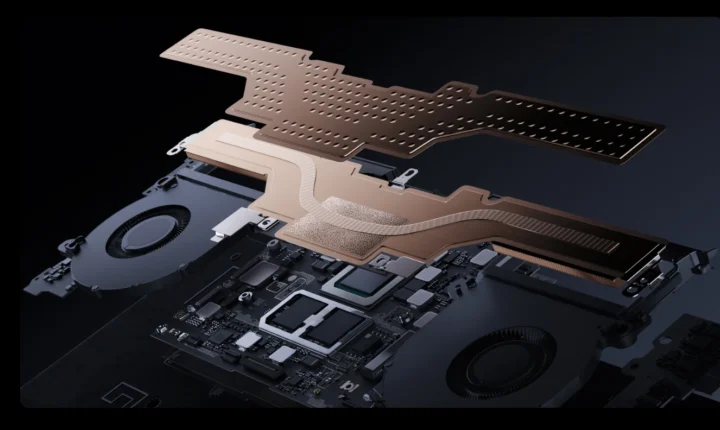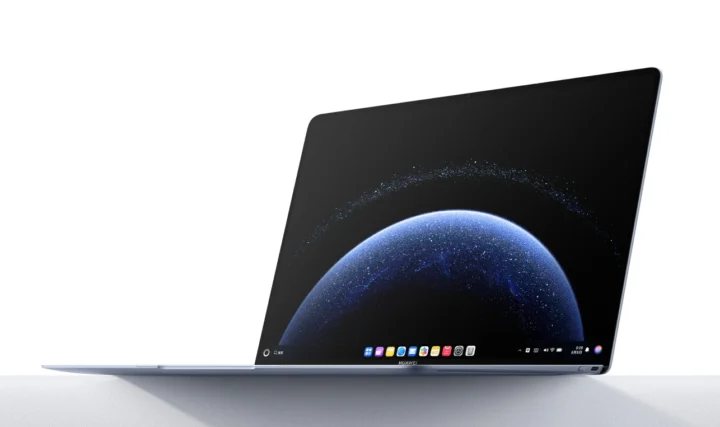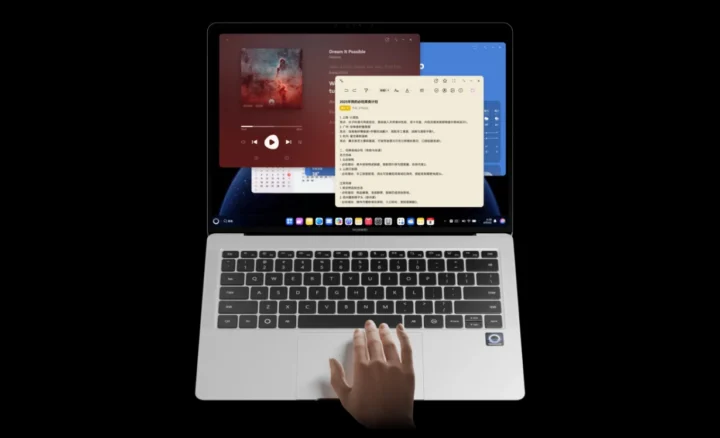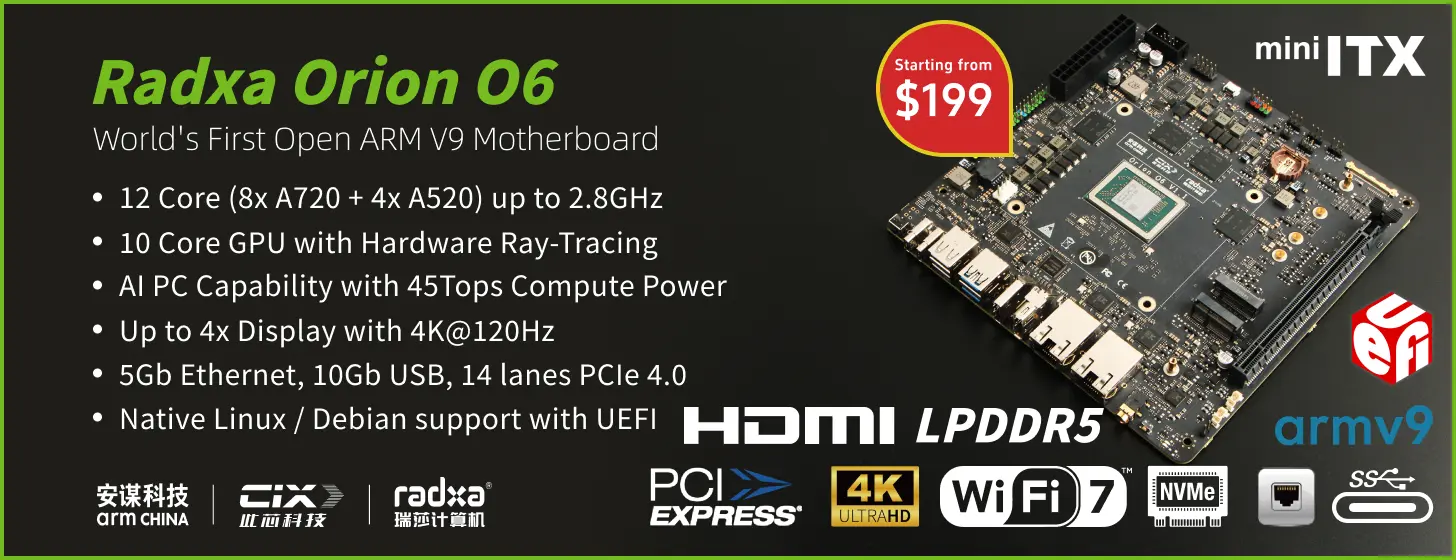Huawei Matebook Pro (HAD-W24 / HAD-W32) resembles a typical laptop with a 14.2-inch display, 24GB to 32GB RAM, and 1TB or 2TB SSD storage. What’s less common is that the processor is not named, and the laptop is the first to run Huawei’s HarmonyOS operating system.
Those two are due to Western countries’ sanctions against the Chinese company. Huawei used to sell Intel-based laptops with Windows and Android smartphones, but they’ve not made hardware based on US technology for a while. As software support would eventually run out, they had to work on an alternative named HarmonyOS, which has been used on smartwatches, smartphones, and tablets for a while, but the Matebook Pro is the first computer sold with the new OS. While we don’t know the processor used, reports mention the Kirin X90 10-core (4+4+2) / 20-thread Arm SoC as an “Apple Silicon” solution.
MateBook Pro specifications:
- SoC – Unnamed – Potentially Hisilicon Kirin X90 10-core/20-thread Arm SoC
- System Memory / Storage options
- HAD-W24 – 24GB RAM + 512GB SSD
- HAD-W32 – 32GB RAM + 1TB SSD
- HAD-W32 – 32GB RAM + 2TB SSD
- Display – 14.2-inch touchscreen OLED
- 3120 x 2080 resolution (Aspect Ratio: 3:2)
- 10-point touch
- 1.07 billion colors
- Viewing Angle – 178° (typical)
- PPI – 264
- Contrast Ratio – 1,000,000:1 (typical)
- Brightness – Typical: 600 nits; peak: 1000 nits
- Eye Protection Mode: Supported (TÜV Rheinland Eye Comfort 3.0 certification)
- Camera – 2MP front-facing camera
- Audio – 6x speakers with Huawei SOUND technology
- Wireless – Dual-band WiFi 6 (IEEE 802.11a/b/g/n/ac/ax) and Bluetooth 5.2
- USB
- 2x USB-C 3.2 Gen1 ports with DisplayPort 1.2 Alt. mode up to 4Kp60, USB PD up to 10W (5V/2A)
- 1x USB-C 3.2 Gen1 port with DisplayPort 1.2 Alt. mode up to 4Kp60, USB PD up to 66W (20V/3.3A)
- Note: only one USB Type-C port can connect to a display at a time
- Sensors – Fingerprint Sensor and Hall Sensor
- User input
- Full-size keyboard
- 5-point touchpad
- Battery – 70Wh rated capacity, 6000mAh @ 11.67V
- Power Supply – 140W fast charge adapter
- Dimensions – 310 x 222 x 13.5mm
- Weight – About 970 grams with battery

The laptop ships with a 140W Huawei fast charger, a USB-C power cable, a USB-C OTG adapter, USB-C digital earphones, and a quick start guide. It runs HarmonyOS 5 with a range of preinstalled apps: File Manager, Gallery, Themes, Smooth Connect, Huawei Cloud Space, Huawei App Market, Huawei Browser, Xiaoyi Input Method, Notepad, Calendar, Smart Life, and more.

I was about to write it may finally be the year of the Linux desktop laptop, but that would be wrong because HarmonyOS does not rely on the Linux kernel, and instead, a kernel developed internally by Huawei, but there seem to be few details about it. There’s a training page for HarmonyOS, and OpenHarmony is somewhat similar to AOSP (Android Open Source Project), with part of the source code made public on Gitee, although I’m not sure which parts are relevant to the latest HarmonyOS 5.
The HarmoyOS laptop is currently offered on Vmall in four variants
- MateBook Pro (24GB + 512GB) = 7,999 CNY ($1,109 US)
- MateBook Pro (32GB + 1TB) = 8,999 CNY ($1,248 US)
- MateBook Pro Soft Light Edition (32GB + 1TB) = 9,999 CNY ($1,387 US)
- MateBook Pro Soft Light Edition (32GB + 2TB) = 10,999 CNY ($1,525 US)
“Soft Light” is an anti-glare solution for the display. It’s unclear whether it will ever be sold outside of China, although I can see a few Huawei devices (one HarmonyOS tablet and a few smartwatches) sold on a popular store here in Thailand. Selling a laptop without Windows will be more difficult, though…
Huawei also announced the Matebook Fold running HarmonyOS, but this one is a pricey foldable laptop. It looks fun, but I’m not sure I’d enjoy using it over the long term.
Huawei has launched 2 laptops powered by its self-developed HarmonyOS operating system.
China has made its debut in breaking the duopoly of Microsoft’s Windows and Apple’s macOS. pic.twitter.com/JdT64z4pJB
— Li Zexin (@XH_Lee23) May 19, 2025
Via HuaweiCentral

Jean-Luc started CNX Software in 2010 as a part-time endeavor, before quitting his job as a software engineering manager, and starting to write daily news, and reviews full time later in 2011.
Support CNX Software! Donate via cryptocurrencies, become a Patron on Patreon, or purchase goods on Amazon or Aliexpress. We also use affiliate links in articles to earn commissions if you make a purchase after clicking on those links.





